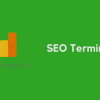
If you have a website then we’re sure you have heard of SEO at some point. If not, then find out how SEO is relevant to your business by reading this article. If you want to rank better on Google then you need to pay attention to your website’s design.
As Google is increasingly focusing on the user experience, how your website looks and performs is becoming all the more important. In this article, we take you through the top web design aspects that will have an impact on your website performance across search engines.
Responsiveness
From a technical perspective, a responsive website directly correlates to better search engine rankings for your website. Google wants to reward its website visitors by providing them with the best possible website experiences when clicking through their search results.
Google made responsive web design a ranking factor all the way back in 2015. In fact, the search engine giant also introduced mobile-first indexing in 2017, meaning that Google predominantly uses the mobile version of your website when indexing and ranking it.
More than 50% of all sites on the web have not caught onto the importance of responsive (aka. mobile-friendly) design. If you’re one of those 50% then there is a strong possibility that you’re deterring visitors due to the user experience you present them with.
The more users you deter, the less sales you make. In Google’s eyes, this signals that your website is not rewarding its users with the quality experience that Google is known for. As a result, the search engine won’t view your site favourably.
Website Speed
Whether you look at it from the user’s or Google’s perspective, website speed is of the utmost importance. More than ever, users are expecting things on demand. Google has caught onto this and now demands that websites are as fast as possible.
If you use your website to drive business revenue then this is of particular importance to you. In fact, Amazon come out and said that a page load slowdown of 1 second could cost the company as much as $1.6 billion per year in lost sales.
This is simply because users will outright leave a website that is loading too slowly. Google has noted that this is a major user experience issue and thus looks more favourable on sites that load quicker.
Sitemaps
Sitemaps are quite a technical thing, but they typically stem from your websites design and structure. In essence, sitemaps help search engines navigate your website easier, thus allowing them to get a better understanding of what the content is about.
In terms of design, your website will have various pages/sub-pages or categories/subcategories, which will often represent a logical flow of the services you offer. For example, on our website the structure is as follows: Homepage > Services > Web (category) > Web design & development (sub-category)
Based on this website structure, we build a sitemap – a text file – which then relays this website structure in Google, helping pages rank in the search engine results.









